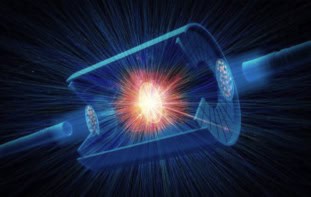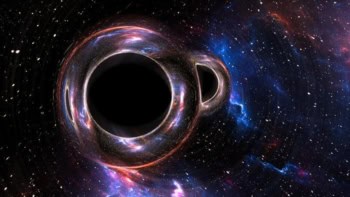Cerenkov radiation -- the radiation emitted by a charged particle when it travels through a medium faster than the speed of light in that medium -- is widely used in particle detectors and counters. In conventional materials Cerenkov radiation is emitted in the same direction as the charged particle is travelling. However, John Joannopoulos and colleagues at the Massachusetts Institute of Technology have calculated that this is not true for a photonic crystal (C Luo et al. 2003 Science 299 368).
A photonic crystal is a material that contains a periodic arrangement of air-filled voids that have a lower refractive index than the host material. It is this periodic variation of refractive index that gives the material its “photonic band gap” — the optical equivalent of the energy gap in a semiconductor. Just as the periodic potential experienced by the electrons in a semiconductor restricts their energy to certain ranges known as bands, the periodic variation of the refractive index in a photonic crystal means that only certain wavelengths of light are able to pass through the crystal.
Joannopoulos and co-workers solved Maxwell’s equations for the case of a charged particle moving through a two-dimensional photonic crystal. They calculated that Cerenkov radiation emitted by the crystal could be emitted backwards with respect to the particle’s direction of travel. Moreover, they found that there was no threshold velocity of the emission of Cerenkov radiation — unlike in conventional materials.
The simulations predict that between about 10 and 200 photons should be emitted per square centimetre and the theorists say that it should be possible to detect this signal from a silicon-based two dimensional photonic crystal structure in the laboratory. The modelling could also be easily extended to three-dimensional crystals, they believe.
If these results are backed up by experiment, they could lead to new applications, such as particle detectors that are sensitive to velocity, and as sources of radiation generation at selectable frequencies.



